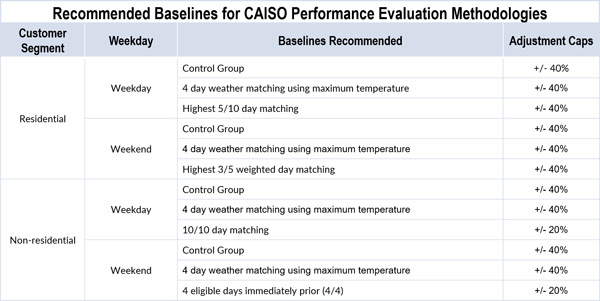By Jason Fordney
CAISO is moving forward with an initiative meant to ease the integration of distributed resources into its markets.
The main goal of the program: to make it easier for grid-connected resources such as rooftop solar, energy storage, plug-in electric vehicles and demand response to participate in the ISO’s market operations, creating more system flexibility and reducing carbon dioxide emissions.
“The number and diversity of these resources are growing and represent an increasingly important part of the resource mix,” CAISO said in its revised proposal.
On May 4, CAISO provided an update on phase two of its Energy Storage and DER initiative, which will propose changes that are due to be reviewed by the Energy Imbalance Market (EIM) Governing Body on July 13 and submitted to the ISO’s Board of Governors for approval during its July 26-27 meeting.
The proposals involve improving the accuracy of DR contributions through alternative energy usage baselines, distinguishing between charging energy and station power for storage resources, and developing a net benefits test for DR resources that participate in the EIM.
Expanded Baseline Options
According to CAISO, a majority of market participants support a set of baselines to assess the performance of proxy demand resources — DR aggregations of retail customers — that was developed by a stakeholder working group.
While the current “10-in-10” baseline methodology is considered accurate for many large commercial and industrial customers, stakeholders don’t think it is appropriate for all customer types, prompting the working group to propose additional baselines. Using the 10-in-10 methodology, the ISO calculates a baseline by examining the 45 days prior to a trade date and finding 10 “like” days in which no DR was required. The ISO then uses hourly average meter data to create a baseline representing a typical load profile, and the resource is paid for reducing usage below the baseline.
Under the new proposal, baselines for residential resources would be based on a four-day weather match that estimates what electricity use would have been in absence of DR dispatch under similar weather and on similar days, and using a control group of similar users.
Commercial baselines would be based on the 10-in-10 method with a 20% adjustment cap, an average of the previous five days and a control group. Baselines are adjusted using actual load data in the hours preceding a DR event to better reflect variables that might not be present in the historical data.
“Stakeholders who supported the proposal stated that the use of additional baselines for residential and commercial customers would improve the accuracy and reduce bias when compared to the 10-in-10 baseline,” CAISO said.
Joint Review of Station Power Rules
Another working group is developing new market rules for energy storage resources.
CAISO is working with the California Public Utilities Commission to distinguish between station power and wholesale charging energy with respect to energy storage devices. The regulator is seeking to redefine station power — electricity used by a generator itself — from a retail perspective, and the ISO said it is important that the rules do not conflict with each other.
The ISO is proposing to simplify its definition of station power as energy used to serve a resource’s own load and settled under a retail tariff.
CAISO said it proposed the changes because it is concerned that storage resources will commingle their charging load and station power load and use wholesale, ISO-metered electricity to serve station power load. If this happens, either the local retail electricity provider is not getting paid for serving station power, or the storage resource is getting charged twice at both the wholesale and retail level for the power.
One option would be to require that wholesale load and retail load be metered separately, but the grid operator is examining whether there are other ways to solve the problem.
CAISO has also proposed revisions to the DR net benefits test that establishes the price threshold above which DR bids are measured. ISO staff and the internal Market Monitor agree that there is a gap in the test’s formula.
The proposal would enable the DR benefits calculation to include natural gas price indices beyond California in order to accommodate EIM participants outside of the state, allowing them to participate as DR resources in the CAISO market.




